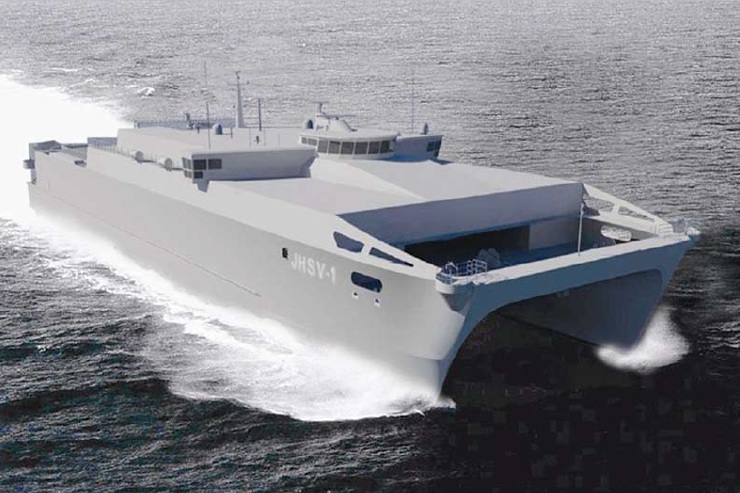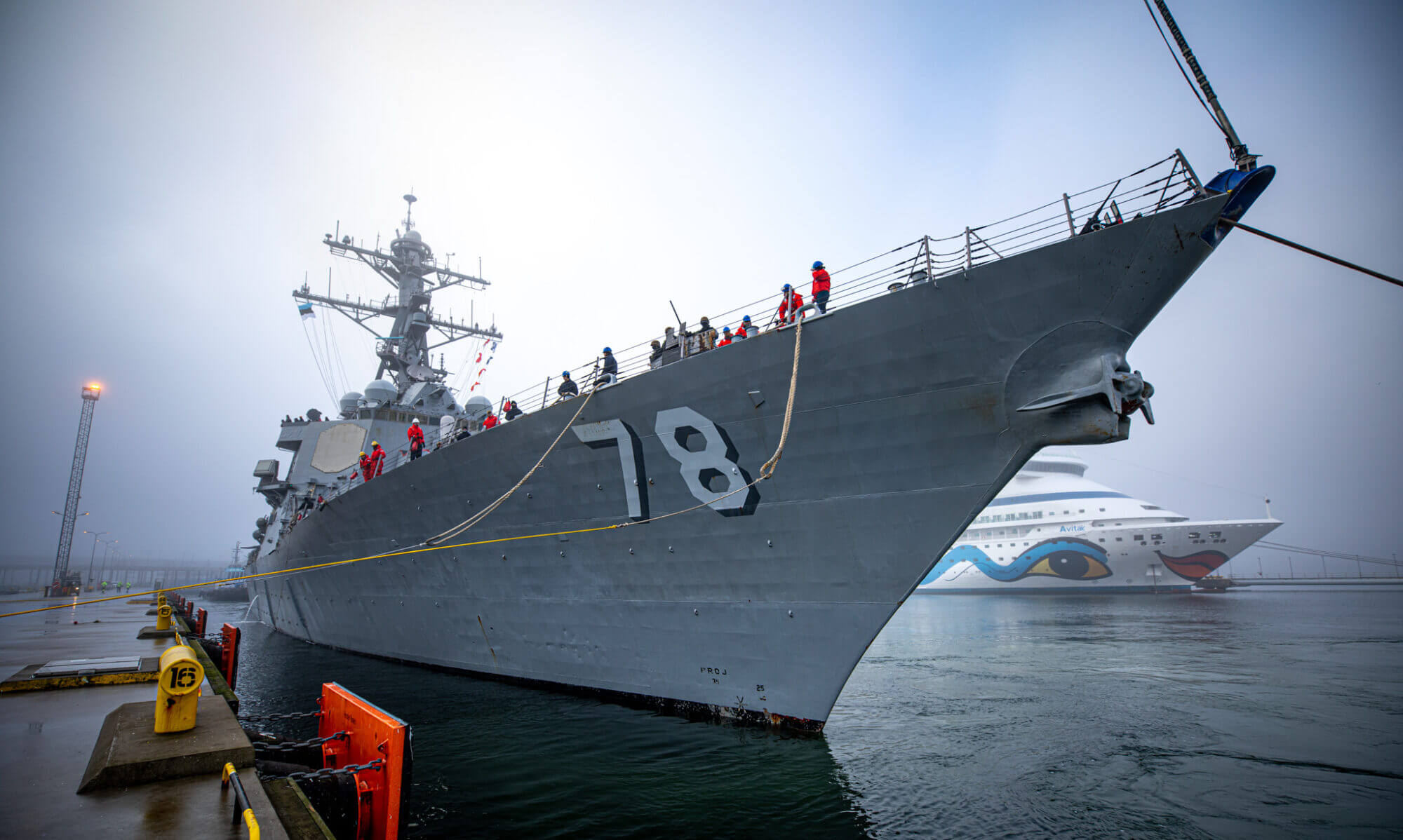Americans for a Sronger Navy Reporting
The sun was shining over the Austal USA shipyard in Mobile, Alabama, as the Expeditionary Fast Transport USNS Apalachicola (EPF 13) was handed over to the U.S. Navy. This was a significant moment for Austal USA, as the ship was not only the second Navy vessel to be named after the coastal Florida city, but also the largest surface ship in the Navy fleet with autonomous capability.
The ship had undergone several months of testing, during which Austal USA and their partners, L3Harris and General Dynamics Mission Systems, analyzed not only its typical ship systems, but also those resulting from the autonomous design and construction contract modifications required by the Navy to establish EPF 13 as an autonomous prototype.
Austal USA President Rusty Murdaugh was proud of his team of shipbuilders and the innovative capabilities they had delivered with this ship. The EPF 13 had the ability to conduct V-22 flight operations and launch and recover 11-meter Rigid Hull Inflatable Boats (RHIBs), making it an ideal candidate for large vessel autonomous operations, including logistics, tendering, and adjunct magazine mission profiles.
The ship’s machinery control system (MCS) was fundamental to the autonomy effort, enabling the ship to be minimally manned by centralizing machinery operations to the bridge. Additionally, the ship was equipped with automated maintenance, health monitoring, and mission readiness systems, providing the capability to conduct up to 30 days of operation without human intervention.
EPF 13 was also the first Expeditionary Fast Transport vessel to be delivered to the Navy with enhanced capabilities to support V-22 flight operations and launch and recover 11-meter RHIBs. These upgrades, combined with the EPF’s speed, maneuverability, and shallow water access, were key enablers for supporting future Expeditionary Advanced Base Operations around the world.
Austal USA’s work on autonomous vessel capability has been identified as an area of strategic importance by the Navy. The company is partnering with L3Harris on the MCS upgrade of Overlord vessel, Mariner (OUSV 3), and construction of Vanguard (OUSV 4), as well as with Saildrone, Inc. on the manufacture of Surveyor unmanned surface vehicles. The investments from academia in uncrewed technology, combined with Austal USA’s efforts, are quickly making south Alabama the epicenter of autonomous naval architecture.
The delivery of EPF 13 was a proud moment for Austal USA, and it marked a significant step forward in the Navy’s autonomous capabilities. With this ship’s advanced features, the Navy’s ability to conduct missions and operations around the world will be greatly enhanced.



